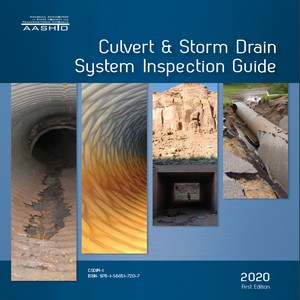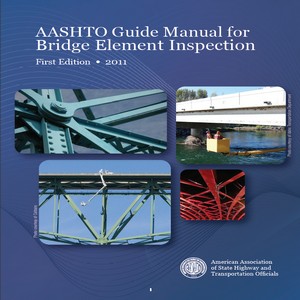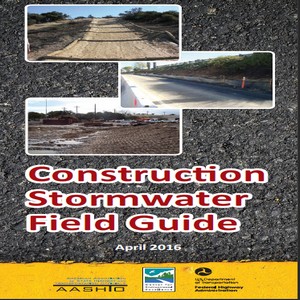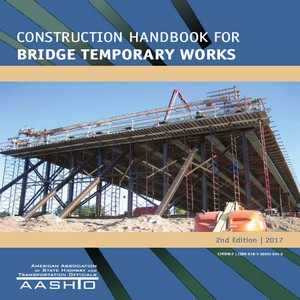AASHTO CSDIM: Culvert & Storm Drain System Inspection Guide
In 1986, the Federal Highway Administration (FHWA) published the Culvert Inspection Manual as a supplement to the Bridge Inspector’s Training Manual 70.
AASHTO CSDIM: Culvert & Storm Drain System Inspection Guide updates the 1986 manual to address the need to inventory, quantify, and rate the condition of in-service culverts and to update the inspection and rating criteria to incorporate over 30 years of change since the original publication.
Culvert and storm drain systems are vital infrastructure assets that require periodic maintenance to
achieve their design service life and proper function. Culverts are buried structures designed to allow
passage of water under roadways, railways, or embankments. Culverts can be structurally similar to
bridges, but are distinguished in terms of span length (diameter for round pipes). The Federal Highway Administration Recording and Coding Guide for the Structure Inventory and Appraisal of the Nation’s Bridges defines a culvert as “a structure designed hydraulically to take advantage of submergence to increase hydraulic capacity.” Culverts, as distinguished from bridges, are usually covered with embankment and are composed of structural material around the entire perimeter, although some are supported on spread footings with the streambed serving as the bottom of the culvert.
Culverts may qualify to be considered “bridge length.” Structures defined as such and of “bridge length” are to be inspected following National Bridge Inventory (NBI) specifications and the AASHTO Manual for Bridge Evaluation (MBE) and, where necessary, the AASHTO Manual for Bridge Element Inspection (MBEI). Storm drain systems are closed-end conduits with inlet and outlet structures and in-line junction boxes that convey storm water runoff from roofs, parking lots, roads, walkways, and other impervious surfaces to collection and discharge points. Together, these drainage and conveyance systems protect our transportation assets from the destructive forces of water and help meet environmental requirements.
Many states have required the inspection of structures less than 20-ft span to follow the NBI
specifications and AASHTO MBE and MBEI. The implementation of this AASHTO CSDIM: Culvert & Storm Drain System Inspection Guide is not intended to preclude states from using the NBI specification or the AASHTO MBE and MBEI or other culvert inspection guides for the inspection of their culverts.
Further, any reference to inspection frequency of culverts or inspector qualifications within AASHTO CSDIM: Culvert & Storm Drain System Inspection Guide is intended for guidance for asset management only and is at the discretion of the culvert or storm drain owner and is not suggested to be implemented in a regulatory sense.





Reviews
There are no reviews yet.